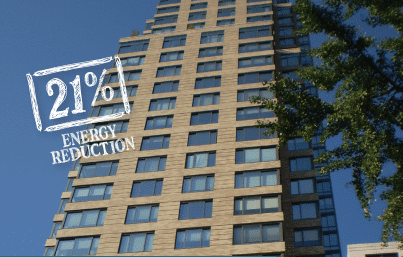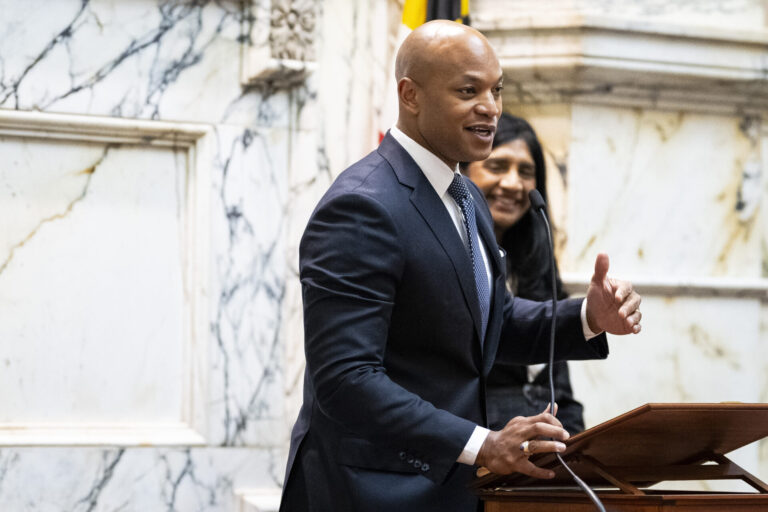Donald Trump once believed in clean energy, so what happened?

President Donald Trump is well known for his record of over the top attacks on clean energy, but properties managed by the Trump Organization have taken advantage of state energy efficiency incentives to save money and reduce their carbon dioxide emissions.
As first reported by Hiroko Tabuchi in today’s New York Times, the Trump Tower at City Center in White Plains, New York, benefited from a lighting upgrade, the addition of a combined heat and power (CHP) system , and other energy efficiency improvements. The project received more than $280,000 in incentives from the Multifamily Performance Program run by the New York State Energy Research and Development Authority (NYSERDA). A low-interest loan from NYSERDA covered the remainder of the cost.
“I strongly believe in clean energy, conserving energy, all of that – more than anybody,” Donald Trump was quoted as saying in a fact sheet on the CHP component of the project that was prepared for NYSERDA by CDH Energy Corp. Those words stand in sharp contrast to Trump’s bombastic attacks on clean energy, climate science, and green buildings.
“The CHP system’s greater efficiency compared to the use of conventional utilities should help to substantially reduce emissions of carbon dioxide as well as other pollutants and greenhouse gases,” the factsheet also said.

Lifetime savings from the Trump Tower energy efficiency project are expected to total just over $2.84 million, more than four times the cost of the upgrades, showing how the very kind of clean energy initiatives that Trump has slammed can generate real economic benefits.
“Trump Tower at City Center reduced its energy use by 21 percent, creating a major savings on energy costs,” according to 2013 NYSERDA case study. “After just over three years, the project has paid for itself with savings.”
The Trump Tower likely never would have benefited from these savings if not for the energy efficiency incentives offered by NYSERDA. In a 2013 video, the building’s property manager explained how his first course of action upon seeing the building’s high energy bills was to explore what options NYSERDA offered.
Other Trump projects benefited from clean energy incentives too
By 2008, the Trump Organization’s participation in the Multifamily Performance Program already included “15 projects – 3385 units,” according to statistics provided to the New York Public Service Commission by TRC Energy Services, a consultant and contractor for NYSERDA.
In addition, at least three other Trump properties benefited from clean energy incentives offered by New Jersey.
“All three projects will yield a projected annual savings of over $11 million in energy costs and the avoidance of over 150 million pounds of CO2 emissions,” according to a 2007 two-pager put out by the New Jersey Clean Energy Program.
“The projects will annually avoid over 150 million lbs. of CO2, a leading cause of global climate change,” said the New Jersey Board on Public Utilities.
Trump also agreed to achieve LEED certification at his “Trump on the Ocean” project, which was planned for Jones Beach, as part of a lease agreement with the New York Office of Parks, Recreation and Historic Preservation. That project was cancelled after the destruction caused by Hurricane Sandy.
“Hurricane Sandy has opened everyone’s eyes to the potential risks of building directly on the oceanfront,” a state official explained in a statement at the time. “Looking over the coming decades, as we face sea level rise and the threat of future damaging storms, we have concluded that building a major new facility directly on the oceanfront, on the scale of the Trump project, is not prudent policy.”
Trump benefited from state clean energy policies that his cronies in the fossil fuel industry have long opposed
Around the time of the Trump Tower project, NYSERDA’s MPP incentive program was funded by three sources: New York’s Systems Benefit Charge, Energy Efficiency Portfolio Standard, and the Regional Greenhouse Gas Initiative (RGGI). These clean energy programs have since been highlighted as models for states seeking to cost-effectively meet the Environmental Protection Agency’s first-ever limits on carbon dioxide pollution from power plants under the Clean Power Plan.
Unfortunately, Donald Trump’s priorities as president seem to be more squarely aligned with the agenda of his allies in the fossil fuel industry, such as the Koch brothers. Trump pledged on the campaign trail to “rescind” the Clean Power Plan, prior to being elected president. Scott Pruitt, a vocal opponent of the Clean Power Plan and close ally of the fossil fuel industry, is Trump’s new EPA administrator.
Koch-funded special interest groups, such as Americans for Prosperity, have long targeted the Clean Power Plan and RGGI, as well as system benefits charges and clean energy standards, with misleading attacks. Trump backers like the coal company Murray Energy have invoked his name in their ongoing attacks on clean energy policies.
Another reminder of Donald Trump’s flip-flops on clean energy, climate change, and green buildings
Donald Trump is now well known for his posts espousing climate change denial and denigrating clean energy on Twitter.
It wasn’t always this way. In 2009, Donald, Eric, and Ivanka Trump’s names appeared alongside those of other business leaders in a full-page ad in the New York Times, which urged President Barack Obama to lead the world on addressing the very real threat posed by climate change.
“Investing in a Clean Energy Economy will drive state-of-the-art technologies that will spur economic growth, create new energy jobs, and increase our energy security while reducing the harmful emissions that are putting our planet at risk,” the ad said.
The energy efficiency improvements at the Trump Tower at City Center, and similar projects undertaken elsewhere, show that as a business, the Trump Organization took steps to put those forward-thinking words into action. Nonetheless, Donald Trump would go on to publicly attack green buildings in 2012 on CNBC.
Lower electricity bills at a Trump Tower, thanks to New York’s clean energy policies
On the campaign trail, Trump wrongly claimed that the Clean Power Plan will raise electricity bills by double digits. But residents of the Trump Tower now enjoy lower electricity bills, thanks to an energy efficiency program made possible by New York’s clean energy policies, which provide a roadmap for other states to affordably meet the Clean Power Plan’s goals.
Installation of a combined heat and power system benefited those Trump Tower residents. Experts say that low-income communities can benefit from CHP too, and have recommended that the EPA include CHP in the Clean Energy Incentive Program component of the Clean Power Plan. The Combined Heat and Power Association planned to meet with members of the Trump administration in February, and its regulatory committee is still working on the Clean Power Plan.
Can Donald Trump learn from his business experience with clean energy?
A number of states are now calling on Trump to stand by the Clean Power Plan.
“States like New York are on the front lines of climate change – and have demonstrated how to cut pollution and emissions while protecting affordable and reliable electricity, creating jobs, and growing our economy,” said New York Attorney General Schneiderman in a recent statement. “The Clean Power Plan builds on that successful work and is a blueprint for the critical action needed to fight climate change’s devastating environmental, economic, and public health impacts. The science is clear and far too much is at stake to turn back the clock on our climate efforts.”
Donald Trump’s own properties benefited from energy efficiency upgrades, courtesy of successful clean energy and climate change policies in states like New Jersey and New York. However, the Trump administration appears to be heading in a very different direction on clean energy and climate change.



